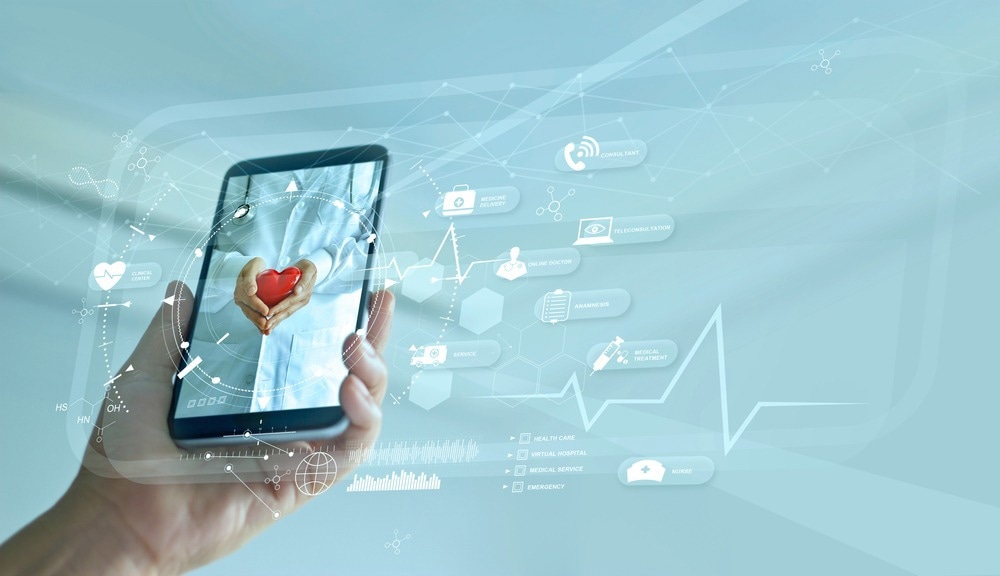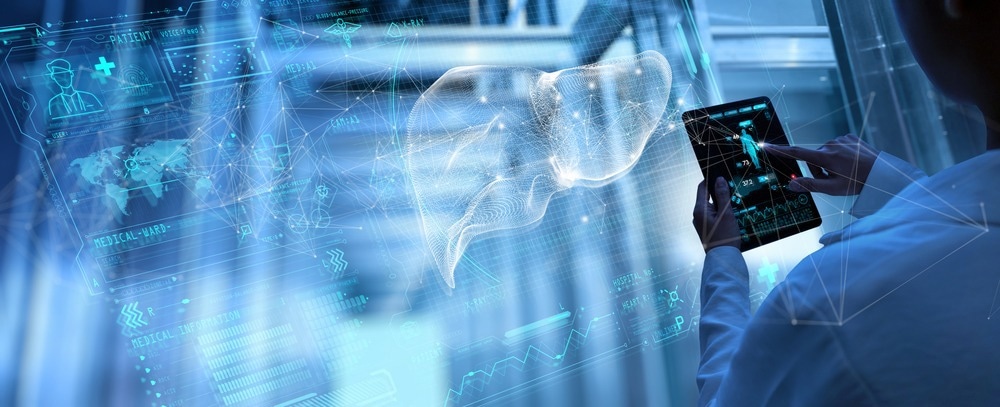Smartphones are part of our daily life whether we believe this is a good thing or a bad thing. The use of phones and connected devices such as smartwatches and fitness trackers are on the rise, and with it the volume of data we are recording online is increasing too. Recently, scientists have been beginning to leverage this data to help detect and predict disease. Advancements in this field of research could transform healthcare.

Smart phones in medicine. Image Credit: PopTika/Shutterstock.com
Digital Phenotyping
Today, more than half of the global population is connected to the internet. We make calls, send messages, upload to social media, track health parameters, and much more. Researchers have begun to explore how they can leverage this wealth of social and behavioral data, collected by smartphones, fitness trackers, sleep trackers, to name a few, to detect the early warning signs of a wide range of diseases.
This method of deducing conclusions about a person’s state of mental and physical health from this sort of data is called digital phenotyping. Research into digital phenotyping is snowballing and key innovations have already been made in this field. Phenotypes refer to the measurable traits a person displays, as opposed to a genotype, relating to a piece of genetic code. We often talk about genotypes underlying phenotypes.
With digital phenotypes, we can look to the data we share online to give clues about our state of mind and state of health. The way we text, for example, can give inferences as to our mood. Our GPS can indicate how often we are leaving the house. Fitness trackers give clues to our physical health and so on.
Research is currently underway that suggests that in the future, digital phenotyping could be used to help make disease diagnoses for illnesses such as depression and anxiety, Alzheimer’s disease, Parkinson’s disease, and more.
For example, recent research has shown that analyses of how people use their phones can be used to predict Parkinson’s disease with 100% accuracy rates. Other research has revealed that accelerometer data can estimate the severity of Parkinson’s tremors with high levels of accuracy. This data is useful for helping patients and doctors track disease progression.
Other studies have shown how data collected via smartphone speakers and microphones can be analyzed to detect changes in breathing that are synonymous with opioid overdose death. It is possible that in the future, this could be developed into an app that automatically contacts emergency services.
Smartphone Cameras as Modern Microscopes
In addition to collecting a wealth of behavioral and cognitive data, smartphones are also equipped with state-of-the-art cameras. Nowadays, smartphone cameras can often carry out tasks that a microscope would have been required for 10 or 20 years ago.
Scientists at the University of Illinois in Urbana-Champaign recognized the advantages of smartphone cameras and leveraged them to design a point-of-care test that analyzes blood samples with phone cameras to detect signs of viral infections. Tests showed the camera’s efficacy in identifying the fluorescent signals produced by amplified viral RNA, allowing them to detect Zika virus, dengue, Chikungunya virus, and Coronavirus disease (COVID-19).
Other recent research conducted at the University of Arizona in Tucson paired a smartphone camera with off-the-shelf microscope components alongside data processing software. As a result, they established a platform capable of detecting norovirus. The system cost less than $40 to set up, whereas with traditional methods it would have cost as much as $50,000.

Diagnostic technology. Image Credit: greenbutterfly/Shutterstock.com
Diagnostic Apps and AI
Researchers are beginning to develop apps that implement AI to analyze information collected by smartphones and detect disease. One example of this is the augmented reality smartphone app that has been designed to help doctors identify if a skin lesion is likely a melanoma. The app was designed to analyze the skin in real-time via a smartphone camera, and it integrated deep learning algorithms.
Tests of the app in development revealed that the real-time process can be fully executed on the smartphone and that target users judge the functionality to be useful. In some years, it is possible that this app may be used to assist healthcare professionals in their assessment of potential melanomas.
Also in development is an app that overcomes the limitations of current Alzheimer’s disease diagnosis (painful lumbar punctures or expensive PET scans). The app administers cognitive and functional tests and utilizes AI to correlate roughly 800 digital biomarkers with clinical data. Its tests simulate daily activities to allow it to measure a wide range of parameters, including gait, subconscious movements, and speech, which are all important indicators of pathology.
The app also has potential as a disease monitoring tool for Alzheimer’s disease as well as Parkinson’s disease, and may also be developed into an early screening tool. If the app reaches market approval it could be a game-changer for neurodevelopmental disease, which is often not diagnosed until the patient is in the later stages of the disease. Catching the disease in its earlier stages opens up the opportunity for novel treatments that target early-stage disease and may result in better disease outcomes.
Sources:
- Francese, R., Frasca, M., Risi, M. and Tortora, G., 2021. A mobile augmented reality application for supporting real-time skin lesion analysis based on deep learning. Journal of Real-Time Image Processing, 18(4), pp.1247-1259. https://link.springer.com/article/10.1007/s11554-021-01109-8#citeas
- Nandakumar, R., Gollakota, S. and Sunshine, J., 2019. Opioid overdose detection using smartphones. Science Translational Medicine, 11(474). https://www.science.org/doi/10.1126/scitranslmed.aau8914
- Ravindran, S., 2021. Smartphone science: apps test and track infectious diseases. Nature, 593(7858), pp.302-303. https://www.nature.com/articles/d41586-021-01253-y
Last Updated: Sep 21, 2022